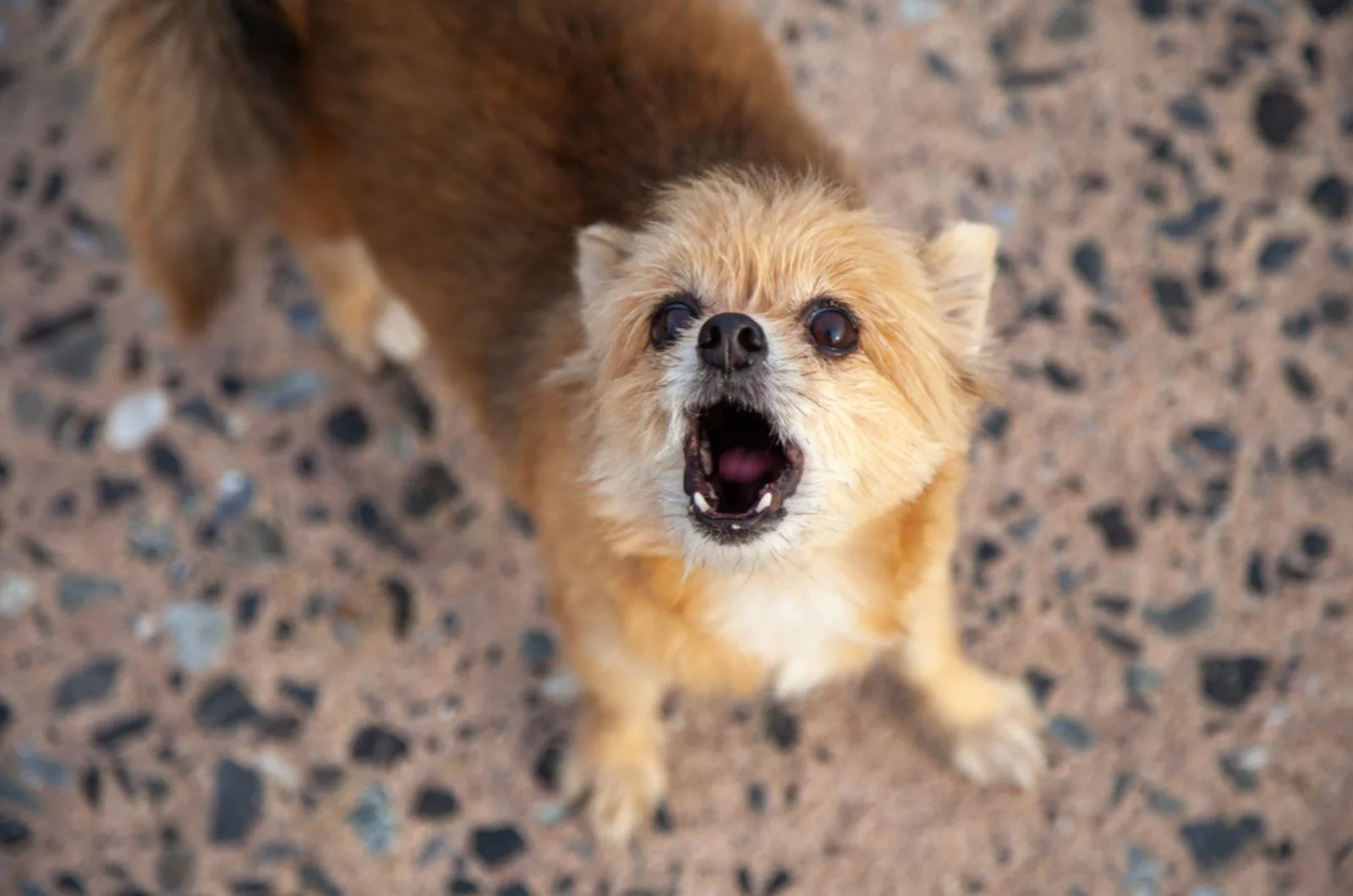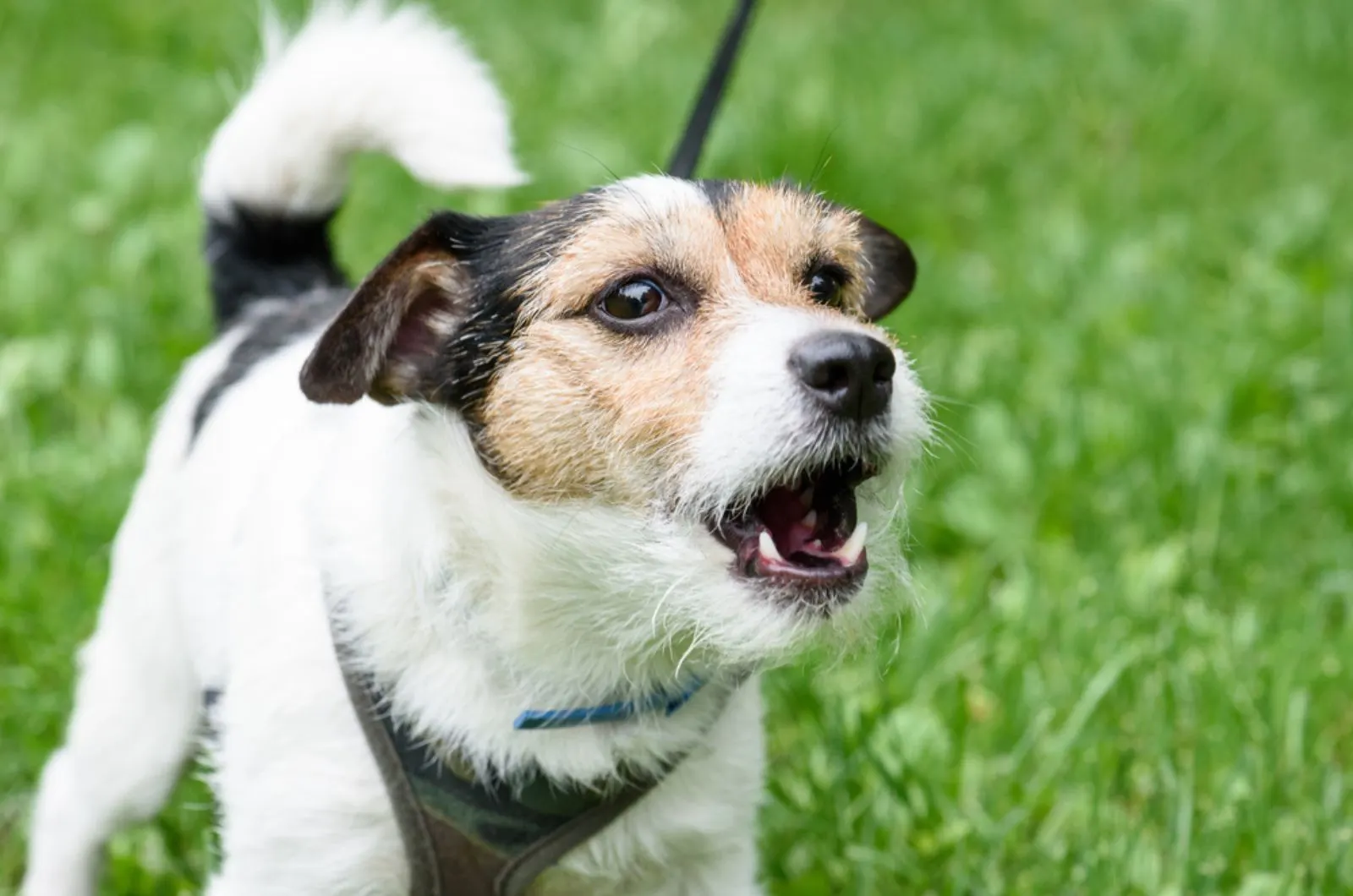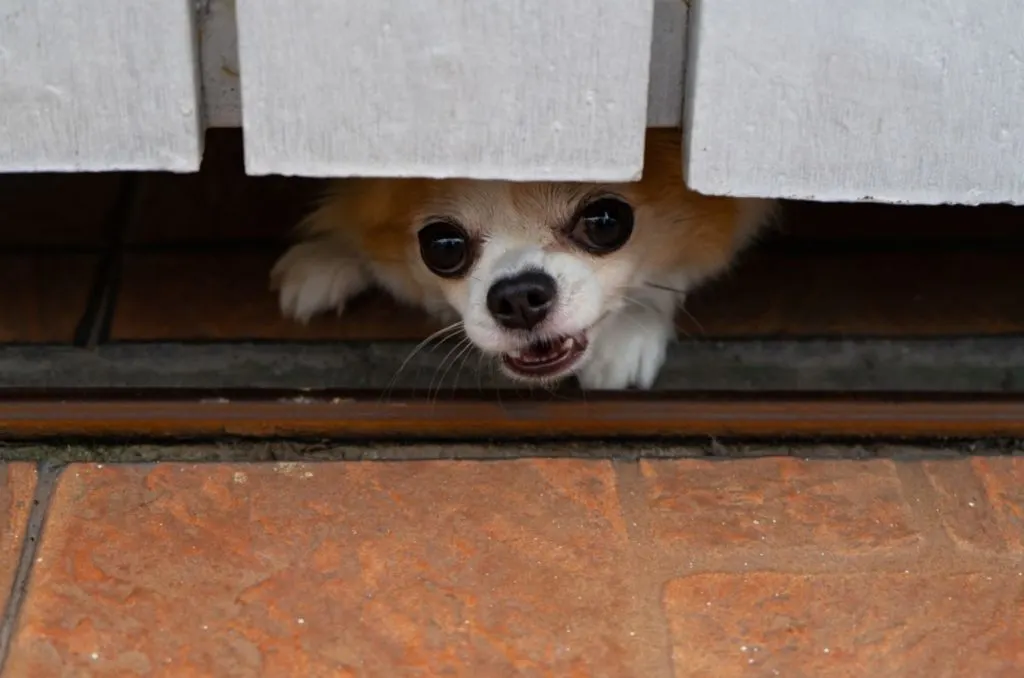In the dog world, the bigger you are, the higher your chances of defeating a dog that is challenging you. Even though most canines are employed as companions in our homes, their primal instincts still run strong.
Small dogs were bred to be companion dogs that appeal to the eye, too. Despite being mixes of different breeds that were later recognized as pure breeds, their temperaments often confuse them to the point of lashing out.
In this article, we will be looking at why small dogs are so aggressive, where it comes from, and if you are looking to get one, help you understand how well it would fit in your home dynamic.
Canine Instincts Do Not Care About Size

It is not a coincidence that small dogs display signs of aggression almost on a regular basis. Yes, big dogs like German shepherds can be aggressive, but a GSD or Rottweiler will more frequently be balanced “out of the box”.
Both genetic factors and social integration and interaction with the human world contribute to the problem of small dog breeds displaying aggression more regularly than large ones. The aggression itself perhaps is not the worst thing.
Regardless of size, a dog that is in a constant state of fearfulness, aggression, or anxiety will have health issues, a hard time socializing, and an overall high level of stress that translates to a low quality of life.
The origin of those unwanted mental states is partially body morphology. A smaller dog is at a disadvantage in many aspects. One of those is its perspective of the world. Objects and living beings constantly towering above you are not an environment that nourishes a healthy mind.
For that reason, many small dogs will develop sudden and irrational fears of things inside the house. It could be a creaking door, the dishwasher, washing machine, a whistling kettle, etc.
The Study That Confirms It
A study on the connection between genetics of small dogs and their aggressive or anxious behavior has shown that two variants of gene locations (IGF1 and HMGA2) directly related to small bodies had a close association with separation anxiety, dog rivalry, owner-directed aggression and touch-sensitivity.
Another pair of loci (locations on a gene), GNAT3 and CD36, that participate in the determination of temperament were connected to “touch-sensitivity, non-social fear, and fear and aggression that directed toward unfamiliar dogs and humans”.
The study concluded that all the loci variants were interconnected so that body size is directly proportional to an aggressive and fearful temperament. Keep in mind that the four loci variants are traits of undomesticated dogs.
In this article on how the German shepherd ranks in terms of breed intelligence, we saw that multiple small dog breeds found themselves in the bottom half of the list, which indicates that obedience and working intelligence are lower than in large dogs.
Still, it does not completely explain why smaller dogs have a tougher time being relaxed. Owners of small dogs have a hand in the continuation of promoting or not correcting unwanted behavior, so that is what we will explore next.
Low Stakes, High Risk

There is evidence that the domestication process was never fully completed in small dog breeds. In the previously mentioned study, the genetic elements that affect behavior and morphology showed a propensity of small dogs to behave fearfully or aggressively.
A lot of it has to do with how the owners of such breeds handle the behavior. Referring to another study that investigated the effectiveness of training methods and owner engagement, I have to say that it is mostly an owner problem, rather than the genes inside a small dog.
Concluding arguments from this Applied Animal Behavior Science study included a low engagement of owners with their small dogs. Although these breeds can show lower working and obedience intelligence, the lack of correction from the owner side is staggering.
The way the study was conducted saw both large and small dogs trained in the same way, to keep it objective. Small dog owners spent less time on interacting with their dogs or showed inconsistent application of training methods.
Equally important, but often dismissed, is the use of negative reinforcement (punishment) for correcting behavior in small dogs. The study found that owners who used that method of addressing unwanted behavior had worse results than those who resorted to positive reinforcement.
Dogs that are constantly punished for unwanted behavior will have poor socialization skills. Although it is a difficult task, socializing aggressive dogs can be achieved with a simple guide and consistency.
Another study showed that height, body weight and skull shape all affect a dog’s instinctual and obedience intelligence. The lower the height, the more fearful and aggressive the dog, but the taller the dog, the more dominance it will try to apply.
One example of a dog’s display of dominance is sitting on their owner or standing or jumping on you. Guests or unfamiliar people can also receive this treatment.
A Small Dog Bite Is Not Dangerous For Humans, But It Is For The Dog
Punishment as a training “technique” is bad enough in itself. However, what definitely makes things worse is encouraging unwanted behavior.
A lack of training will leave an already insecure and aggressive dog without any structure or sense of direction. Many small dog owners love to carry, constantly pet, and infantilize their dogs.
This type of interaction only intensifies the unwanted behavior. Smaller dogs can become clingy and possessive or develop severe separation anxiety. Both things are frequently present in smaller breeds.
Biting and snarling at their owners or other people is yet another signal of a chaotic state of mind. Without the size or strength to cause serious pain to their owners, it is a behavior many dog lovers and owners consider “cute”.
It could not be farther from cute. You can simply try to imagine an adult male Rottweiler doing the same thing and become petrified just thinking about it. The fact a small dog cannot cause extensive damage does not mean they should be allowed to try.
Disregarding your small dog biting you, growling at you, or other similar behavior is perhaps the reason small dogs have not been fully domesticated yet. Chihuahuas have been around for ages, and their ancestry probably saw them receive fewer corrections for aggressive behavior.
The Difference Between A Hyperactive And Aggressive Dog

Small dogs can often lull their owners into thinking they are always playful. Due to the size, jumping on you, chewing
Many owners think it funny that their small dogs eat underwear, socks, chew on furniture, dig in the backyard, etc., which is simply concerning. Understanding dog behavior and reading their ear, head, and tail position is crucial for a healthy home with a canine.
Small dogs usually do not require extraneous amounts of physical activity to become tired. A couple of long walks every day should be enough for a dog to be exhausted. Of course, breeds from the terrier group are very active and might require more exercise than most small dogs.
Finding yourself in a position where your dog is tired but still aggressive means that it was never hyperactive. Body language can be a telltale sign of anxiety and fear, so pay close attention to the way your dog looks at you and other people and dogs, how it barks, etc.
In the majority of cases, small dogs that display undesired behavior are a combination of hyper and aggressive. There are several techniques that luckily work for both problems, but the key is to get rid of the overly excited state of mind.
If your dog is stuck to you like glue, it might be a case of possessiveness. Although it might sound creepy to most people, it is actually a conduit for pent-up anxiety or aggression.
Chihuahuas, miniature Poodles, and other small dogs prone to aggressive behavior will bite, snarl, bark at people who try to approach you while they are lying in your lap. This “protective purpose” invented by the dog itself is a way to provide some form of job to do.
Keep your dog busy with physical and mental training, socialization, and visit a professional dog trainer or behaviorist if you are out of your depth.
Summary
Why are small dogs so aggressive? The answers I provided are plenty of proof that mini pooches perhaps require even more work and dedication than large dog breeds.
Some of it can be attributed to their genetics, some things to the (d)evolution of their domestication, and most to human error. As dog owners, it is our responsibility to provide all that a dog needs, and for small breeds it is structure, confidence, and purpose.
Next time your small dog goes in berserk mode, instead of punishing the behavior, convert it into training. Always expand your knowledge on dog behavior and practice it to the best of your ability.





